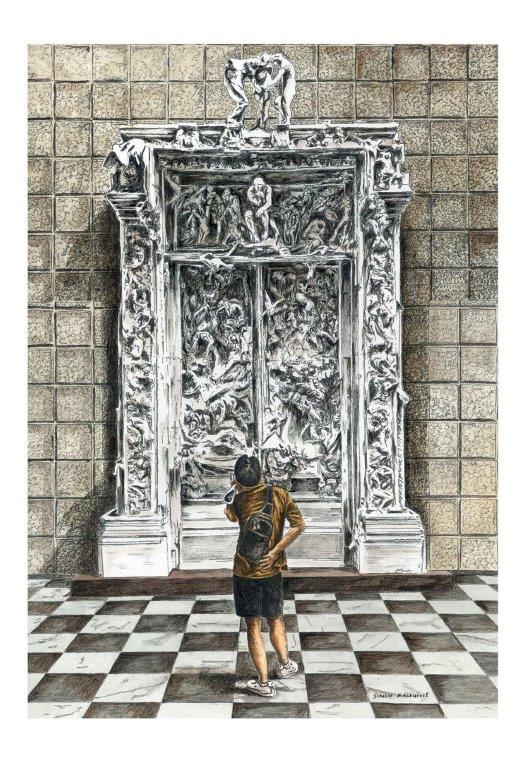
Rodin - Gates of Hell - Musee d'Orsay
Rodin's "Gates of Hell" at the Musée d'Orsay: A Masterpiece of Passion and Torment.Auguste Rodin, one of the most influential sculptors of the late 19th and early 20th centuries, left an indelible mark on the art world with his groundbreaking creations. Among his most celebrated works is the monumental sculpture known as the "Gates of Hell," now prominently displayed at the Musée d'Orsay in Paris. This magnificent masterpiece, begun in 1880 and completed posthumously, stands as a testament to Rodin's unparalleled talent and his exploration of the human condition.
The "Gates of Hell" was conceived as a commission for a decorative feature on a new decorative arts museum in Paris, but the project was never fully realized during Rodin's lifetime. Nevertheless, this sculpture has transcended its original purpose to become a profound reflection of the human experience. Standing over six meters in height, the piece features an intricate composition of over 200 individual figures, drawn from Dante Alighieri's "Divine Comedy." These figures writhe and contort in a tumultuous representation of the damned souls in Hell, evoking a visceral sense of torment and despair.
Rodin's genius lies in his ability to capture the raw intensity of human emotion through his sculpted forms. The figures in the "Gates of Hell" exhibit a range of emotions, from anguish and agony to lust and ecstasy. Each detail, from the contorted bodies to the expressive faces, conveys a profound sense of passion and torment. The sculptor's meticulous attention to anatomy and his innovative approach to composition give life to the figures, making them appear as if they are writhing and struggling in the fiery depths of Hell.
The "Gates of Hell" is not merely a sculpture; it is a portal into the depths of the human soul. It invites viewers to contemplate the complexities of the human condition, the duality of our desires and fears, and the eternal struggle between good and evil. Rodin's work challenges us to confront our own inner demons and grapple with the universal themes of sin, redemption, and the human quest for meaning.
In conclusion, Rodin's "Gates of Hell" is a masterpiece that transcends its original purpose as a decorative feature. It stands as a testament to the artist's unparalleled talent and his profound exploration of human emotion and experience. The sculpture's intricate composition and emotive figures make it a powerful and enduring work of art that continues to captivate and inspire viewers at the Musée d'Orsay and around the world.